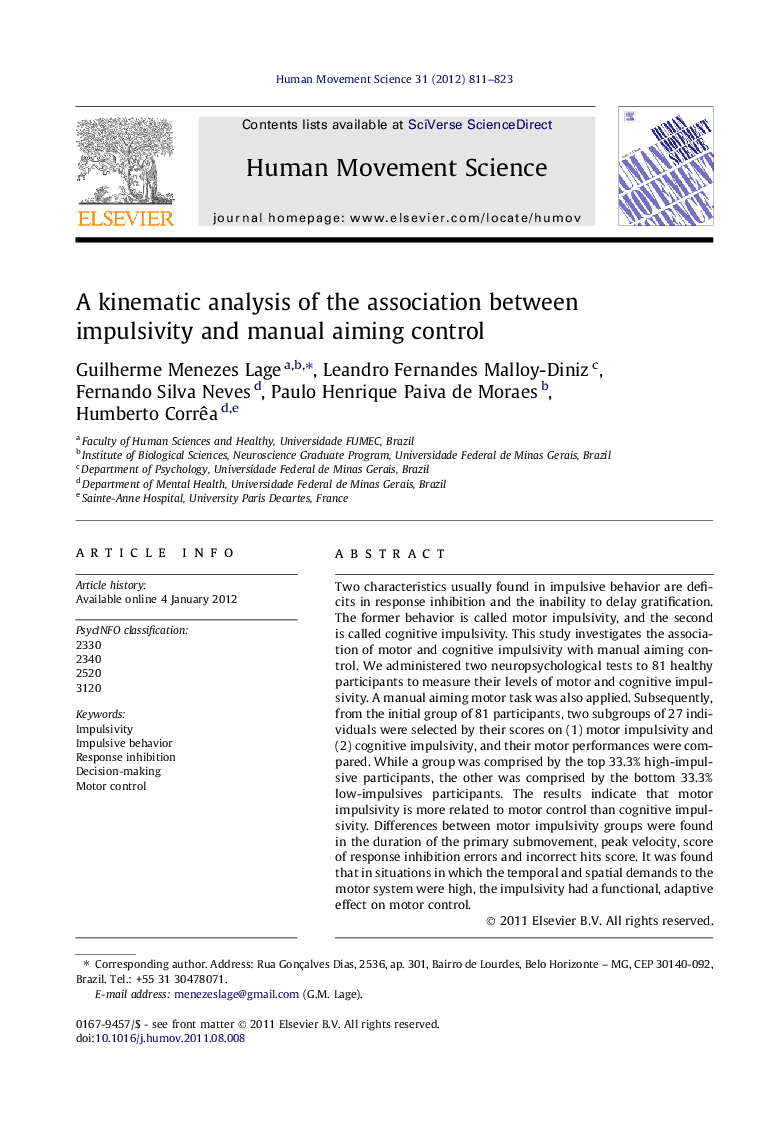| Article ID | Journal | Published Year | Pages | File Type |
|---|---|---|---|---|
| 928466 | Human Movement Science | 2012 | 13 Pages |
Two characteristics usually found in impulsive behavior are deficits in response inhibition and the inability to delay gratification. The former behavior is called motor impulsivity, and the second is called cognitive impulsivity. This study investigates the association of motor and cognitive impulsivity with manual aiming control. We administered two neuropsychological tests to 81 healthy participants to measure their levels of motor and cognitive impulsivity. A manual aiming motor task was also applied. Subsequently, from the initial group of 81 participants, two subgroups of 27 individuals were selected by their scores on (1) motor impulsivity and (2) cognitive impulsivity, and their motor performances were compared. While a group was comprised by the top 33.3% high-impulsive participants, the other was comprised by the bottom 33.3% low-impulsives participants. The results indicate that motor impulsivity is more related to motor control than cognitive impulsivity. Differences between motor impulsivity groups were found in the duration of the primary submovement, peak velocity, score of response inhibition errors and incorrect hits score. It was found that in situations in which the temporal and spatial demands to the motor system were high, the impulsivity had a functional, adaptive effect on motor control.
